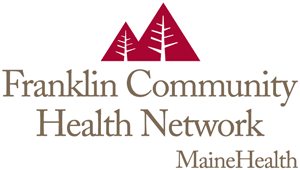Franklin Cardiovascular Health Program (FCHP)
- Need: To develop sustainable, community-wide prevention methods for cardiovascular diseases in order to change behaviors and healthcare outcomes in rural Maine.
- Intervention: Local community groups and Franklin Memorial Hospital staff studied mortality and hospitalization rates for 40 years in this rural, low-income area of Farmington to seek intervention methods that could address cardiovascular diseases.
- Results: A decline in cardiovascular-related mortality rates and improved prevention methods for hypertension, high cholesterol, and smoking.
Evidence-level
Effective (About evidence-level criteria)Description
 Local community
groups teamed up in an effort to develop a program that
focuses on hypertension, cholesterol, smoking, diet, and
physical activity in rural Maine. This program tracked
the movement between detection and treatment over a
40-year period in order to evaluate appropriate screening
methods. Residents of Franklin County were the main focus
of the program.
Local community
groups teamed up in an effort to develop a program that
focuses on hypertension, cholesterol, smoking, diet, and
physical activity in rural Maine. This program tracked
the movement between detection and treatment over a
40-year period in order to evaluate appropriate screening
methods. Residents of Franklin County were the main focus
of the program.
To overcome the cardiovascular issues facing this low-income community, the Franklin Cardiovascular Health Program (FCHP) implemented a community-wide intervention model. This emphasis on community involved finding the right person for the right task at the right place for each patient. The program revealed that a person's socioeconomic status played a significant role in the condition of one's cardiovascular health. Due to this finding, FCHP developed community-based education with respect to residents' local cultures and education levels.
With this information, FCHP set out to build a sustainable cardiovascular awareness program that collected people's health data and measured it over time to better tailor feedback to each person. Many factors contributed to the program's high participation, including:
- Integration between health services and social services
- Intentional blending of public health, community health, and medicine
- Public communications written in simple language
- Social services through the outreach system that reinforced prevention in the home and community
- Encouragement of collaboration among organizations
- Constant communication among local groups and institutions
Services offered
FCHP reached out to Franklin residents by:
- Meeting people where they regularly go, such as work:
- Engaged with owners or management for financial support
- Scheduled weekly or monthly consultations at the worksite
- Completed one-on-one individual assessments
- Utilized LPNs, community health workers, and volunteers
- Using the workplace to conveniently initiate
cardiovascular risk screenings with motivational
interviewing techniques:
- Blood pressure
- Weight
- Cholesterol Finger Sticks (lipids)
- Lifestyle Questions:
- Eating/Nutrition
- Physical Activity
- Alcohol
- Drugs
- General feeling of wellness
- Designing creative, engaging ways to help patients become aware of their healthcare needs
- Targeting prevention activity across a risk continuum in multiple settings
- Developing shared information systems to target and track individuals and groups with active follow-up to those at risk
- Minimizing geographic, financial, and reading levels as well as other barriers to health and healthcare
- Adopting scientifically validated methods, measures, and outcomes relating to cardiovascular health
Results
Throughout the program:
- 50% of county adults were screened and evaluated.
- FCHP cholesterol screening increased cholesterol control to 28.5% within 40% of adults.
- Smoking quit rates increased 21% after smoking cessation projects were created.
In addition, FCHP coordinators saw the following results:
- Decline in hospitalizations per capita
- $5,450,362 in reductions for in- and out-of-area hospital charges per year
- Decreased mortality rates and cardiovascular-specific mortality rates
- Better healthcare access
- Improved detection and control of hypertension, high cholesterol, and smoking
For more in-depth information about this program and its outcomes:
Record, N.B., Onion, D.K., Prior, R.E., Dixon, D.C., Record, S.S., Fowler, F.L., ... & Pearson, T.A. (2015). Community-Wide Cardiovascular Disease Prevention Programs and Health Outcomes in a Rural County, 1970-2010. JAMA, 313(2), 147-55.
Replication
In order to replicate this program, it is crucial to have:
- A strong local not-for-profit group with organizational strength
- Capacity to access grant funds
- Ability to work with a local health system
- Local health system's commitment to completing the triennial ACA-mandated Community Health Needs Assessments (CHNAs)
- Maximizing involvement capacity of professionals, volunteers, patients, and families
Topics
Access
· Cardiovascular disease
· Health screening
· Hospitals
· Tobacco use
· Wellness, health promotion, and disease prevention
States served
Maine
Date added
March 25, 2015
Date updated or reviewed
March 31, 2025
Suggested citation: Rural Health Information Hub, 2025. Franklin Cardiovascular Health Program (FCHP) [online]. Rural Health Information Hub. Available at: https://www.ruralhealthinfo.org/project-examples/790 [Accessed 13 April 2025]
Please contact the models and innovations contact directly for the most complete and current information about this program. Summaries of models and innovations are provided by RHIhub for your convenience. The programs described are not endorsed by RHIhub or by the Federal Office of Rural Health Policy. Each rural community should consider whether a particular project or approach is a good match for their community’s needs and capacity. While it is sometimes possible to adapt program components to match your resources, keep in mind that changes to the program design may impact results.
